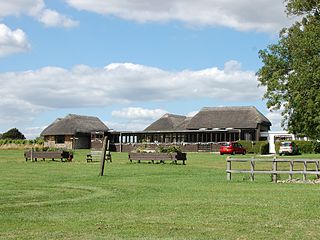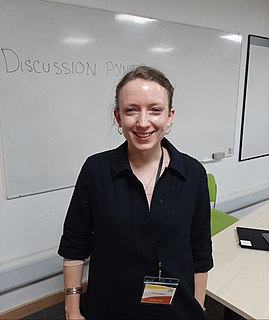
Arnold Joseph Toynbee was a British historian, a philosopher of history, an author of numerous books and a research professor of international history at the London School of Economics and King's College London. From 1918 to 1950, Toynbee was considered a leading specialist on international affairs.

Allectus was a Roman-Britannic usurper-emperor in Britain and northern Gaul from 293 to 296.

A Study of History is a 12-volume universal history by the British historian Arnold J. Toynbee, published from 1934–1961. It received enormous popular attention but according to historian Richard J. Evans, "enjoyed only a brief vogue before disappearing into the obscurity in which it has languished." Toynbee's goal was to trace the development and decay of 19 world civilizations in the historical record, applying his model to each of these civilizations, detailing the stages through which they all pass: genesis, growth, time of troubles, universal state, and disintegration.
The Selgovae were a people of the late 2nd century who lived in what is now the Stewartry of Kirkcudbright and Dumfriesshire, on the southern coast of Scotland. They are mentioned briefly in Ptolemy's Geography, and there is no other historical record of them. Their cultural and ethnic affinity is commonly assumed to have been Brittonic.

Lucius Neratius Marcellus was an imperial Roman military officer and senator who held a number of posts in the Emperor's service. Marcellus was elected consul twice, first under Domitian in 95 AD and again under Hadrian in 129. His life provides several examples of how patronage operated in early Imperial Rome.
The Novantae were a people of the late 2nd century who lived in what is now Galloway and Carrick, in southwesternmost Scotland. They are mentioned briefly in Ptolemy's Geography, and there is no other historical record of them. Excavations at Rispain Camp, near Whithorn, show that it was a large fortified farmstead occupied between 100 BC and 200 AD, indicating that the people living in the area at that time were engaged in agriculture.
Francis John Haverfield, was an English ancient historian, archaeologist, and academic. From 1907 to 1919 he held the Camden Professorship of Ancient History at the University of Oxford.

Sheppard Sunderland Frere, CBE, FSA, FBA was a British historian and archaeologist who studied the Roman Empire. He was a fellow at All Souls College, Oxford.
Michael Gordon Fulford, CBE, FBA, is Professor of Archaeology at the University of Reading, He studied Archaeology and Latin at Southampton University, where he was also awarded a doctorate. Between 1971 and 1974, he was employed as the personal research assistant of Professor Sir Barry Cunliffe and was afterwards appointed lecturer and later also reader at the University of Reading. He received a personal professorship in 1988 and became professor of the Chair of Archaeology at the university when it was established in 1993. He has also been Dean of the Faculty of Letters and Social Sciences and Pro-Vice-Chancellor (1998–2004).

Bignor Roman Villa is a large Roman courtyard villa which has been excavated and put on public display on the Bignor estate in the English county of West Sussex. It is well known for its high quality mosaic floors, which are some of the most complete and intricate in the country.
The Society for the Promotion of Hellenic Studies, known as the Hellenic Society, was founded in 1879 to advance the study of Greek language, literature, history, art and archaeology in the Ancient, Byzantine and Modern periods. The first President was J. B. Lightfoot, the biblical scholar and Bishop of Durham.

Jocelyn Mary Catherine Toynbee, was an English archaeologist and art historian. "In the mid-twentieth century she was the leading British scholar in Roman artistic studies and one of the recognized authorities in this field in the world." Having taught at St Hugh's College, Oxford, the University of Reading, and Newnham College, Cambridge, she was Laurence Professor of Classical Archaeology at the University of Cambridge from 1951 to 1962.
The Classical Association is a British learned society in the field of classics, aimed at developing classical study and promoting its importance in education.
John Joseph Wilkes, is a British archaeologist and academic. He is Emeritus Yates Professor of Greek and Roman Archaeology at University College London.

Sir George Macdonald was a British archaeologist and numismatist who studied the Antonine Wall.
Margerie Venables Taylor was an archaeologist and editor of the Journal of Roman Studies, and held posts including Secretary for the Society for the Promotion of Roman Studies. She was particularly instrumental in recording excavations in Roman Britain.
Dorothy Charlesworth (1927–1981) was a Roman archaeologist and glass specialist who served as Inspector of Ancient Monuments. She worked within Britain and Egypt.

Lisa Lodwick is an archaeologist who studies charred, mineralised and waterlogged macroscopic plant remains, and uses carbon and nitrogen stable isotope analysis to understand the crop husbandry practices of the ancient Romans.
Britannia is an annual peer-reviewed academic journal published by Cambridge University Press on behalf of the Society for the Promotion of Roman Studies. It was established in 1970 and the first editor-in-chief was Sheppard Frere. The journal covers research on the province of Roman Britain, Iron Age and post-Roman Britain, and western provincial archaeology, as well as excavation reports. It was established because of the large increase in archaeological excavations, increased publication costs, and in order to establish coherence to the field of Roman Britain.
Elizabeth Douglas Van Buren was a British Classical and Near-eastern archaeologist.









